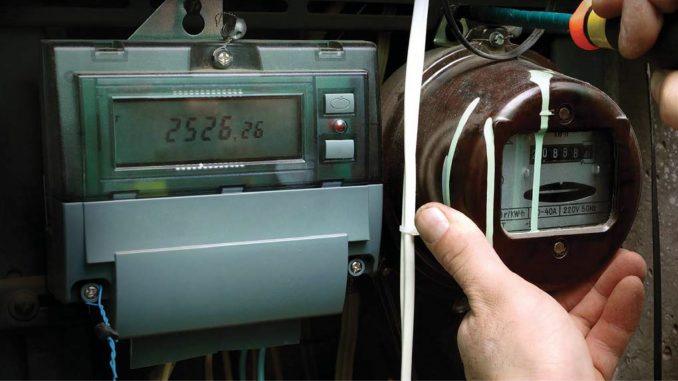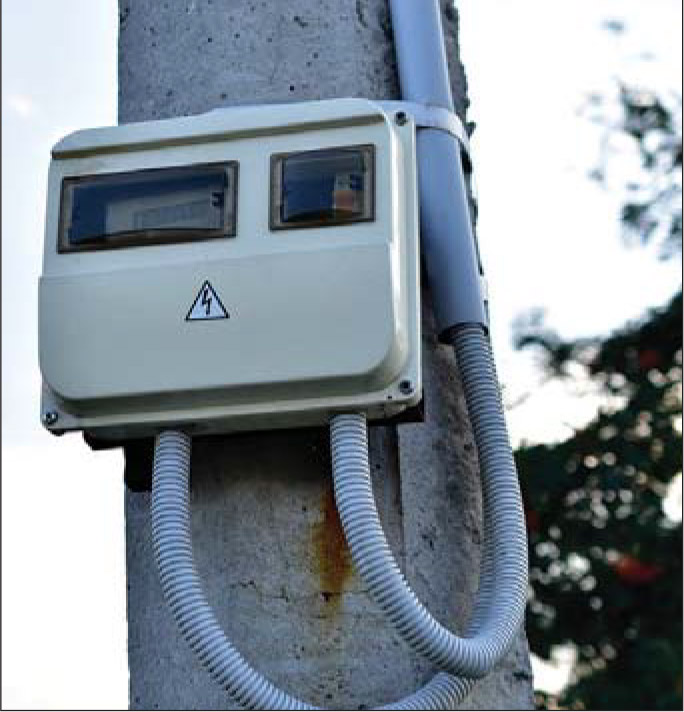
Meter data management systems (MDMSs) help in the consolidation of data from meters, analyse the data trends from meter readings and resolve issues of meter tampering, outages, theft, etc. Broadly, an MDMS imports the data from head-end servers (HESs) such as advanced metering infrastructure (AMI), then validates, organises and processes it for further analysis.
Earlier, monthly meter readings used to be collected with the sole purpose of billing. Now, MDMS and smart meters have paved the way for data collection at very short intervals of 5-15 minutes. In addition, the data collected has a broader scope as it is used for analysis purposes. With the larger data volume and increased frequency of data collection, data analytics lies at the core of MDMS. It is also useful for sending alerts regarding meter-based conditions such as usage pattern, events and system performance. Further, it interconnects the metering system with a broad range of enterprise applications.
MDMS helps in undertaking business analytics and deciphering meaningful trends from the consumer meter data. It provides valid, complete and uniform data for improving customer service, operating the consumer portal, and undertaking distribution planning and tariff analysis. It also manages the commands from the downstream.
Further, MDMS helps in real-time event management and notifies voltage anomalies, outage/restoration and tampering. Besides, the data gathered from the system helps in undertaking historical/ predictive analysis. This helps in maintaining a secure, comprehensive control point of information to achieve business objectives. The availability of accurate information from the MDMS helps in enhancing consumer satisfaction and meeting consumer expectations. It also helps in improving the operations of a discom through improved asset management and quick response to power quality disruption.
Importance of MDMS in AMI
AMI includes the infrastructure and applications that enable the gathering of information related to energy usage for the host system, that is, the MDMS. The prime benefit of AMI is shortening the long process of meter reading and billing. It also improves billing efficiency by removing manual reading and enabling fast detection of dead meters. Remote disconnection and reconnection also help increase collection efficiency. Further, real-time auditing up to the distribution transformer (DT) level for loss identification helps in improving energy accounting accuracies. Real-time monitoring of DT loading also improves the DT failure rate.
Network management and life extension through AMI help address the problem of phase imbalance. Overall, an AMI system is expected to bring about reliable power supply to smart cities with the integration of futuristic technologies – energy storage, net metering, EV charging, ADR, power quality management, all of which will be looked after by AMI.
Functionalities of MDMS
MDMS uses metering infrastructure, SAP solutions, IT/OT applications and MDMS architecture sites and domains. Each of these provides vital functionalities. The key functionality of MDMS is maintaining a system of records for meter data. Meter readings from AMR for the past 24 hours can be delivered to an MDMS via a file interface daily. Further, it supports some key features like provisioning, scheduled meter reads, outage management, on-demand meter records, connect and disconnect (CDC) and CDC status check. It can also be integrated with the geographic information system and outage management system (OMS) for tracking outage recurrence, outage restoration, etc.
MDMS supports the scheduled export of meter data to non-SAP systems (such as ADR, network planning, analytics tool, consumer portal, mobile apps, energy audit and accounting, revenue protection module, prepayment and forecasting). MDMS generates several core standard reports like theft flag reports (providing a detailed list of meters that have reported a theft), system activity reports (showing various KPIs), billing date change reports and non-reporting meter detail reports (providing a list of all meters not communicating with HES).
Benefits of MDMS
With MDMS, reading and billing efficiency can be improved in many areas such as:
- Meter reading: Reduction in equipment and labour costs for meter reading.
- Metering: Deferred capital expenses for existing meter replacements.
- Field services: Reduction in operating costs for collection, connection/disconnection, cut-ins, rereads, filed tests, investigations and other field work.
- Call centres: Reduction in complaints, enquiries, cancellations, rebilling, etc.
- Meter accuracy and irregular meter conditions: Increase in the recovery of unaccounted-for energy. This also helps in revenue protection.
- Outage management: Reduced outage/restoration and false despatch costs.
- Inactive meters/Unoccupied premises: Reduced unbilled energy costs.

Further, with MDMS, micro-level energy auditing can be done to help in leakage detection. This is done using DTswith smart meters using interval data from both DT and consumer meters for energy accounting; DT loss monitoring at 30-minute intervals; and validation, estimation and editing of missing data.
According to Tata Power-DDL, a trend analysis of the various reports generated on MDMS has helped control thefts and reduce AT&C losses. Other efficiency improvements include error-free bills, reduction in site visits for resolving remark cases, provisional billing, and sealing discipline (local troubleshooting). Further, data from Tata Power-DDL shows that the number of complaints has decreased in the past few months, along with provisional billing. The utility achieved 98.5 per cent billing success during the pandemic period with a base of 200,000 meters.
The consumer benefits include the provision of value-added services (VAS), home automation, peer-to-peer comparison, comparative analysis with cost impact and DSM/energy auditing.
Challenges and the way forward
The system is not without challenges. These include its integration with different applications. Further, there is a need to increase IT usage to increase dependency on the IT system. Also, there is a need for skill development as new products would require regular training and skill enhancement. Having a friendly user interface is also of importance.
 MDMS plays a significant role in interpreting meaningful trends in data, besides enabling real-time event management, recognising voltage anomalies, improving consumer billing, increasing efficiency of the OMS and many more. With the government mandating a shift to smart prepaid meters, MDMS will become a must-have application in smart meter planning and deployment.
MDMS plays a significant role in interpreting meaningful trends in data, besides enabling real-time event management, recognising voltage anomalies, improving consumer billing, increasing efficiency of the OMS and many more. With the government mandating a shift to smart prepaid meters, MDMS will become a must-have application in smart meter planning and deployment.
Based on a presentation by Subhadip Raychaudhuri, HOD, Smart Metering, Tata Power Delhi Distribution, at a recent Power Line conference
